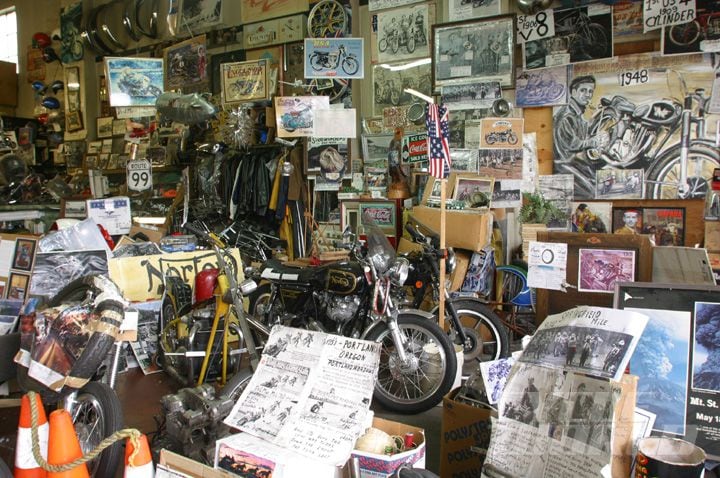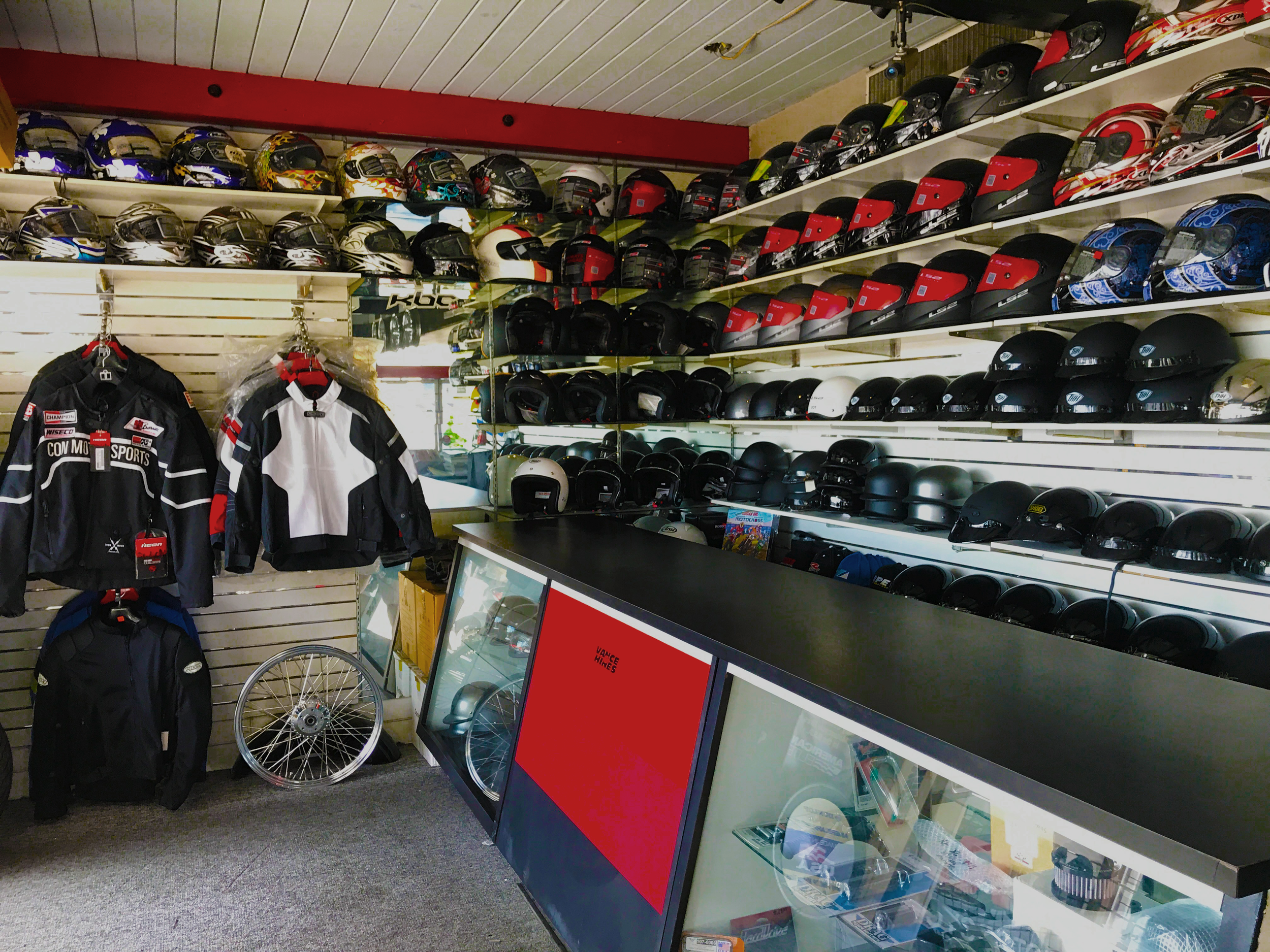Must-Have Motocross Gear: Elevate Your Riding Experience Today
Must-Have Motocross Gear: Elevate Your Riding Experience Today
Blog Article
Understanding the Important Parts of a Motorcycle: A Comprehensive Overview for Lovers
For motorcycle lovers looking to boost their riding experience and ensure their bikes run efficiently, understanding the necessary components of a motorcycle is extremely important. Each element, from the engine's complex operations to the crucial function of the stopping systems, not only affects performance yet likewise safety and security and comfort.
Engine Elements

The camshaft plays a crucial duty in managing the timing of the engine's shutoffs, making sure the precise opening and closing necessary for effective fuel and air consumption, along with exhaust expulsion. This timing is vital to preserving optimal engine performance and performance. Additionally, the carburetor or gas injection system, relying on the motorbike model, is in charge of mixing air with gas in the right proportion for burning.
The air conditioning system, either air or liquid-based, functions to maintain the engine's temperature within operational limitations, avoiding getting too hot and making certain durability - motorcycle parts nz. Each part, meticulously developed and integrated, contributes to the smooth procedure of the engine, defining the motorbike's power outcome and general performance
Transmission System
Essential to the motorbike's performance, the transmission system makes certain effective power transfer from the engine to the wheels. This system comprises a number of essential parts, consisting of the clutch, gearbox, and final drive, each playing a crucial role in equating the engine's power right into motion. The clutch, commonly run by a hand lever, serves to disengage the engine and engage from the transmission, permitting smooth gear modifications and controlled acceleration.
The gearbox, often referred to as the transmission appropriate, contains a set of equipments that riders can manually shift via to readjust the bike's rate and torque result. These equipments are set up in a sequence that allows the motorbike to speed up smoothly and keep optimum engine efficiency throughout numerous rates. Most motorcycles utilize a consecutive gearbox, needing the motorcyclist to move gears in a predetermined order.
Braking Devices
While understanding the transmission system is vital to taking advantage of a motorbike's power, similarly crucial is the ability to control and quit that power efficiently, which is where braking mechanisms come right into play. Brakes are vital for safety and performance, supplying the biker with the necessary control to browse various terrains and problems. Normally, motorbikes feature 2 kinds of stopping systems: disc brakes and drum brakes.
Disc brakes are a lot more widespread in modern motorcycles because of their exceptional efficiency. They consist of a brake disc, caliper, and pads. When activated, the caliper squeezes the brake pads against the rotating disc, transforming kinetic energy right into heat, therefore slowing the wheel. This system uses better heat dissipation, regular performance, and improved stopping power, especially in damp problems.
On the other hand, drum brakes, though much less common, are still found in some motorbikes. They function by pushing brake shoes versus the internal surface area of a drum attached to the wheel. While typically much less efficient in heat dissipation and quiting power, drum brakes are less complex and more cost-efficient.
Comprehending these stopping systems' nuances allows motorcyclists to recommended you read maintain their motorcycles appropriately and appreciate the engineering that makes certain safe and efficient stopping.
Suspension and Steering
Suspension and guiding systems are vital parts that considerably affect a bike's handling and experience convenience. The shock absorber, including forks at the front and shock absorbers at the back, absorbs road abnormalities, boosting security and control. Front forks, inverted or typically telescopic, compress and rebound to mitigate impacts, while rear shock absorbers maintain tire contact with the roadway, critical for grip and security.
Steering, centered around the handlebars, links the motorcyclist to the motorcycle's directional control. The guiding head bearings ensure smooth procedure, permitting exact ability to move. Appropriate positioning and upkeep of these bearings are essential for foreseeable guiding action and decreasing biker fatigue.
The suspension's adjustability is another vital element; preload, damping, and rebound setups permit customization to fit different riding conditions and designs. This flexibility is essential for maximizing performance, whether browsing metropolitan roads or dealing with sturdy trails. Advancements like digital shock absorber use real-time modifications, enhancing adventure high quality throughout varied terrains.

Electric Systems
After making sure a regulated and smooth trip via efficient suspension and guiding systems, interest turns to the electric systems, a pivotal aspect of contemporary motorcycles. These systems play a critical role not just in beginning the engine yet additionally in powering numerous parts that boost the capability and security of the motorcycle.
At the heart of a motorcycle's electric system is the battery, which stores electrical energy essential for starting the engine and powering complementary systems - mx parts nz. The generator or generator, paired with the rectifier-regulator, makes sure the battery continues to be charged while the motorcycle functions, transforming power right into electric power and keeping voltage degrees
The ignition system, one more critical element, is accountable for firing up the air-fuel mix in the engine's cyndrical tubes. Modern motorcycles often utilize a digital ignition system, using better efficiency and reliability contrasted to traditional systems.
Illumination systems, including headlights, tail lights, and view publisher site indicators, are also important, ensuring exposure and safety for the biker. Extra electronic elements such as sensors, control systems, and displays add to innovative attributes like gas shot administration, anti-lock braking systems (ABDOMINAL MUSCLE), and digital dashboards, Find Out More even more boosting the riding experience.
Conclusion
A thorough understanding of a motorbike's vital elements, consisting of the engine, transmission system, stopping mechanisms, suspension, steering, and electrical systems, is important for enthusiasts aiming to enhance efficiency, convenience, and safety and security. Proficiency of these components enables informed decisions pertaining to maintenance and upgrades, ultimately enhancing the riding experience. By integrating this understanding, cyclists can guarantee their bikes operate at peak efficiency and integrity, thus making the most of both satisfaction and durability of their cars.
For motorbike lovers looking to raise their riding experience and guarantee their bikes run smoothly, comprehending the important elements of a bike is paramount.Essential to the motorbike's performance, the transmission system makes sure efficient power transfer from the engine to the wheels.While comprehending the transmission system is vital to using a motorcycle's power, just as crucial is the capacity to control and stop that power efficiently, which is where stopping systems come into play. Normally, motorcycles include 2 kinds of stopping systems: disc brakes and drum brakes.
A comprehensive understanding of a bike's important elements, consisting of the engine, transmission system, stopping devices, suspension, guiding, and electric systems, is crucial for enthusiasts intending to optimize safety and security, efficiency, and convenience.
Report this page